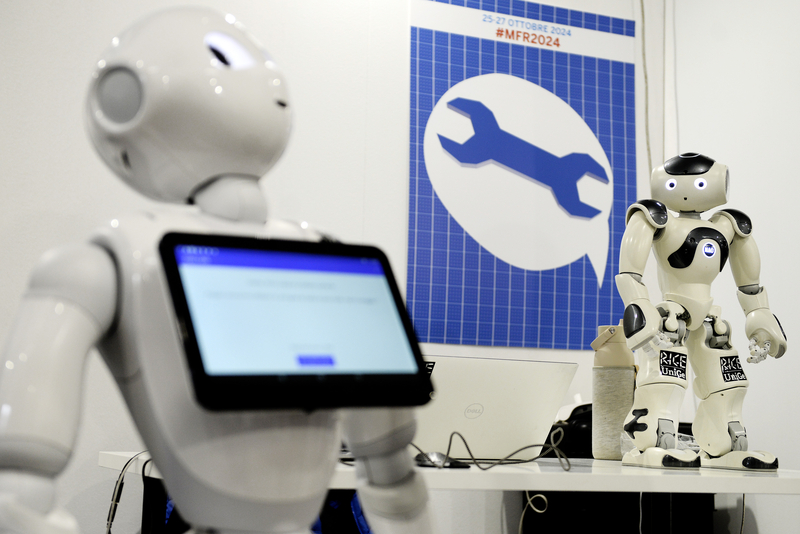What is the hottest new job title, particularly in Washington, DC? The CAIO – chief artificial intelligence officer. Hundreds of agencies across the federal government are scrambling to find and hire hundreds of chief AI officers by the end of the year.
One of the takeaways from President Biden’s recent AI Executive Order (EO 13960) is the goal of ensuring every arm of government has a top executive who is ready to deal with AI. And, along those lines, the Office of Management and Budget just released guidance to federal agencies on not only how to implement Biden’s AI executive order, and more crucially, how to hire a CAIO and what her or his responsibilities should be.
The comment period on the draft memorandum closes on December 5, 2023, and EO 13960 – on which it’s based – gave agencies a 60-day window to designate a person for this role, which puts us about halfway through that timeline.
Primary role and responsibilities
The memo states that the CAIO’s primary role would be coordination, innovation, and risk management for their agency’s use of AI, and the CAIO must be a position at the Senior Executive Service, Scientific and Professional, or Senior Leader level, or equivalent.
Agencies may choose to designate an existing official, such as a Chief Technology Officer, Chief Data Officer, or similar official with relevant or complementary authorities and responsibilities, provided they have significant expertise in AI and meet the other requirements.
The enumerated responsibilities for a CAIO include (among others):
- in coordination with other responsible officials, managing their agency’s use of AI, promoting AI innovation, managing risks from the use of AI, and carrying out the agency responsibilities defined in the Executive Order;
- serving as the senior adviser for AI to the head of the agency and other senior agency leadership and within their agency’s senior decision-making forums;
- developing a plan for compliance with the memorandum and an agency AI strategy;
- advising the agency CFO and Chief Human Capital Officer on the resourcing requirements and workforce skillsets necessary for applying AI to the agency’s mission and adequately managing its risks;
- supporting agency involvement with appropriate interagency coordination bodies related to their agency’s AI activities, and with AI standards-setting bodies;
- identifying and managing risks from the use of AI, especially for the effects on safety and rights; and
- working with relevant senior agency officials to establish or update processes to measure, monitor, and evaluate the ongoing performance of AI applications and whether they are achieving their intended objectives;
The CAIO must be “deeply interconnected” with HR, IT, data, cybersecurity, civil rights, and customer experience leaders in their agency.
The Government Accountability Office and Federal Election Commission are two of the offices that are exempt from hiring a CAIO, but the Executive Office of the President will have one.
“As the AI field accelerates, organizations that fail to create the CAIO role will be left behind.”
Constellation Research
The Department of Health and Human Service has already compiled its own AI Playbook that references the Executive Order and specifies how US agencies can use AI while also protecting their operations from these key risks:
- having a lack or transparency and accountability;
- inadequate cyber and privacy protections;
- having biased data and thereby facing possible legal repercussions;
- having operational deficiencies that lead to inaccurate or inconsistent results.
CAIO role as a profession
Outside the US government, the CAIO role is being touted by executive placement firms and consultancies as a role that will help organizations create a strategy for using generative AI and traditional AI and determine where to use AI in existing business processes, such as in automating daily tasks to improve efficiency and reducing waste.
Those firms are advising smaller businesses on how they can use such a role more affordably on a part-time basis and how firms can attract the right talent, with some executive search firms exclusively catering to this niche market.
According to Glassdoor, the estimated total pay for a US-based CAIO is $297,996 per year, with an average salary of $179,310 per year. These numbers represent the median, and the estimated additional pay is $118,686 per year, which could include cash bonus, commission, tips, and profit sharing.
What does it take to advance into such a role? “There may be many routes to the CAIO ascension; for example, a CTO, a CDO, a CIO, a chief risk and compliance officer, or even a chief legal officer or general counsel or line-of-business executive,” write Andy Thurai and R “Ray” Wang in a recent report from their employer, Constellation Research.
The case for a CAIO is obvious to Thurai and Wang: AI is still immature and has not yet proven its worth in most settings. “It still needs many surrounding acts such as security, privacy, governance, provenance, ethicality, and truthfulness before it can offer real value to enterprises,” they said.
They advise corporate boards to consider AI at the same level as cybersecurity, saying: “As the AI field accelerates, organizations that fail to create the CAIO role will be left behind.”
Author’s comment
In a column last month, I stated my opinion that the skill set compliance and risk professionals could bring to the cryptocurrency sector could have a big impact in helping to rebuild the sector’s damaged reputation. Likewise, I believe if a compliance executive with an excellent data analytics background were to give the CAIO position a whirl, it would be a home run for the organization that landed her. Just sayin’.
















